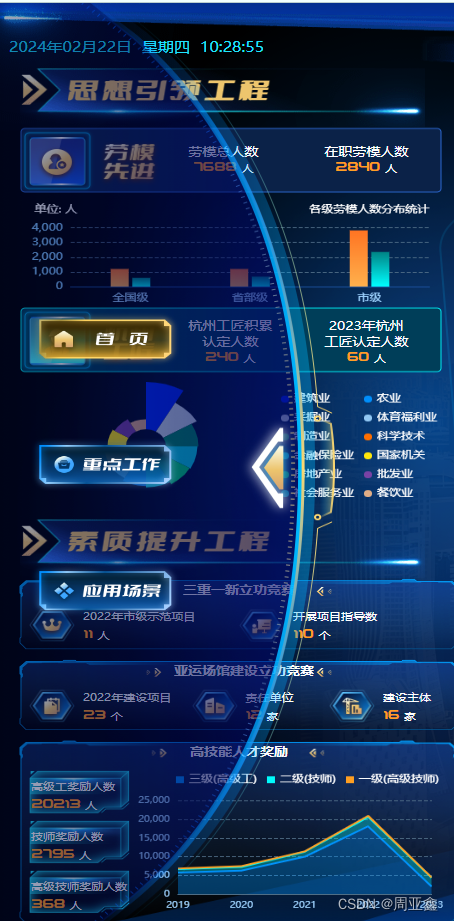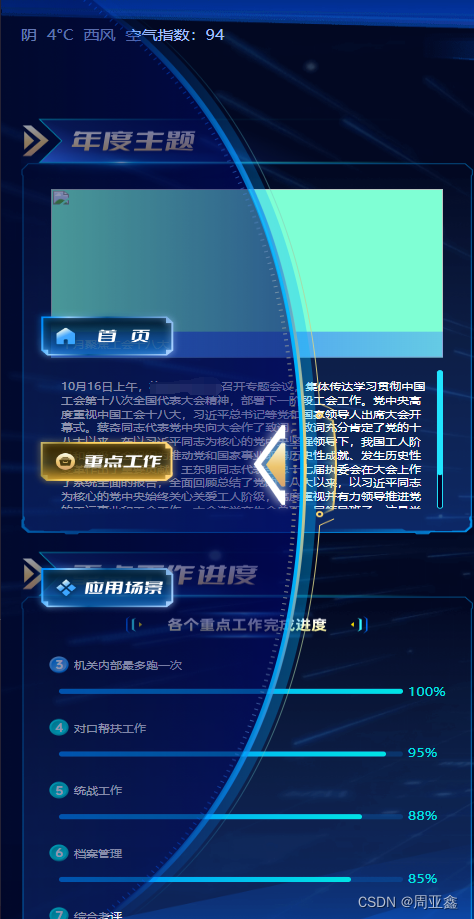PC端封装侧边导航


template
<div v-if="showBox == false" class="leftShow" @click.stop="toggleBox"></div>
<div class="container" :class="{ show: showBox, fixed: fixedBox }">
<div class="arrow" @click="toggleBox"></div>
<div class="content">
<!-- 盒子内容 -->
<div class="img1" @click="$router.push('/home/home')"></div>
<div class="img2"></div>
<div class="img3" @click="$router.push('/scenarios/home')"></div>
</div>
</div>
js
<script>
export default {
components: {
},
data() {
return {
showBox: false, // 控制盒子显示和隐藏
fixedBox: false, // 控制盒子固定和取消固定
}
},
watch: {},
mounted() {},
methods: {
toggleBox() {
this.showBox = !this.showBox
if (this.showBox) {
this.fixedBox = true
} else {
this.fixedBox = false
}
},
},
}
</script>
css
.leftShow {
width: 50px;
height: 114px;
position: absolute;
top: 50%;
left: 0;
transform: translate(0, -50%);
background: url(~@/assets/imgs/home/sy_wzk@2x.png) no-repeat;
background-size: contain;
cursor: pointer;
z-index: 3;
}
.container {
position: fixed;
left: -336px; /* 初始位置在左侧隐藏 */
top: 50%;
transform: translateY(-50%);
width: 336px;
height: 1080px;
transition: left 0.5s; /* 过渡效果 */
z-index: 888;
background: url(~@/assets/imgs/home/sy_yzk@2x.png) no-repeat;
background-size: contain;
}
.container.show {
left: 0; /* 划出后固定在左侧中间 */
}
.container.fixed {
position: fixed; /* 固定位置 */
}
.arrow {
width: 50px;
height: 114px;
cursor: pointer;
position: absolute;
right: 40px;
top: 50%;
transform: translate(0, -50%);
display: flex;
align-items: center;
}
.content {
padding: 10px;
position: relative;
.img1 {
position: absolute;
top: 358px;
left: 30px;
width: 191.41px;
height: 65.89px;
background: url(~@/assets/imgs/home/sy_sy@2x.png) no-repeat;
background-size: contain;
cursor: pointer;
}
.img2 {
position: absolute;
top: 504px;
left: 30px;
width: 191.41px;
height: 65.89px;
background: url(~@/assets/imgs/home/sy_yzd@2x.png) no-repeat;
background-size: contain;
cursor: pointer;
}
.img3 {
position: absolute;
top: 651px;
left: 30px;
width: 191.41px;
height: 65.89px;
background: url(~@/assets/imgs/home/sy_yycj@2x.png) no-repeat;
background-size: contain;
cursor: pointer;
}
}```











 本文介绍了如何使用Vue.js和CSS实现一个可切换的PC端侧边导航栏,通过组件化设计和CSS样式控制其显示、隐藏、固定及动画效果。
本文介绍了如何使用Vue.js和CSS实现一个可切换的PC端侧边导航栏,通过组件化设计和CSS样式控制其显示、隐藏、固定及动画效果。
















 844
844











 被折叠的 条评论
为什么被折叠?
被折叠的 条评论
为什么被折叠?










